Citation (Harvard): Huhn, J. N. (2023) “Talking About the Dragon in the Room: Chinese Membership in the Mekong River Commission”, Regional Policy Insights, 1(1): 14-20.
Abstract:
This paper examines the relationship between the Mekong River Commission (MRC) and China, the upstream nation that has a significant influence on the water resources of the Mekong River. It argues that the MRC needs to engage more with China, both directly and through the Lancang Mekong Cooperation (LMC), to achieve its goals of sustainable development and cooperation in the river basin. It also analyzes the challenges and opportunities for the MRC to balance the needs of its members and the interests of China, as well as the different perspectives and models of development that the MRC and the LMC represent. The paper explores the historical and political context of the MRC and the LMC, the funding and governance structures of the two organisations, and the impact of the Belt and Road Initiative (BRI) on the Mekong region. The paper concludes that the MRC should continue to focus on grassroots cooperation, integrate the BRI projects into its strategies, and formalize its relationship with the LMC, while recognizing that China is unlikely to join the MRC in the foreseeable future.
Keywords: Mekong River Commission, China, sustainable development, river politics, Lancang Mekong Cooperation, Belt and Road Initiative, grassroots engagement
River politics involve an inherent power imbalance, as upstream nations have more control over the water resources than downstream nations. Thus, cooperation among basin nations is the best way to ensure that the needs and interests of all basin nations are taken into account in the development of the river region. The Mekong River Commission (MRC) was established in the 1950s to facilitate this cooperation in mainland Southeast Asia. The MRC consists of the basin nations of Vietnam, Thailand, Cambodia and Laos, with China and Myanmar as dialogue partners since 1996 (Mekong River Commission, 2023b). Since the source of the Mekong is located in China, the MRC has to balance the needs of its members and the interests of China.
In a recent article, Thong Anh Tran (2022) discussed the allegations against China, claiming that Beijing is withholding water to advance its domestic development at the expense of downstream nations. This raises the question of whether the MRC can achieve its goals without China’s membership and whether the downstream nations are completely dependent on Beijing.
The MRC publishes white papers on the Basin Development Strategy (BDS) and a related Strategic Plan (SP) every ten and five years respectively. In 2021, the latest BDS and SP were published (Mekong River Commission, 2021). In addition to the renewed commitment to the goals of sustainable development of the river basin, the BDS calls for closer cooperation with the Lancang Mekong Cooperation (LMC). The LMC was founded in 2016 under the leadership of China and includes the governments of the MRC as well as China and Myanmar.
China’s preference for new organisations in the Mekong region was evident, as Dr Su Hao, a professor at the Department of Diplomacy at the China Foreign Affairs University, has previously stated (see Sovachana and Murg, 2019). He specifically referred to initiatives funded by the Asian Development Bank (ADB), implying that Beijing was trying to encourage the basin states to play a more active role in the development of the Greater Mekong Subregion (GMS).
Unlike the ADB, where the combined voting power of the US and Japan accounts for more than 25% of the total votes (Morris and Higashikokubaru, 2015), the MRC relies heavily on “Development Partners” from outside the region (Mekong River Commission, 2023a). In 2020, of the roughly 18.3 million USD that the MRC received in funds, less than four million USD came from the member nations. Japan alone contributed more than the four member countries combined, and the German development agency Gesellschaft für Internationale Zusammenarbeit contributed more than any single member. Overall, the funding of the MRC is dominated by Japan and Western, especially European, actors. The only time that China contributed to the budget of the MRC was in 2019, when it donated 30,000 USD (BDO Laos, 2019).
This casts a different light on the relationship between the MRC and China. The MRC is governed solely by the MRC council, Joint Committee and Secretariat, which are composed of officials and nationals from the member states Mekong River Commission, 2023c). However, a large proportion of the funds coming from outside the region are earmarked. For instance, over 90% of the funds provided by the Japanese government have been earmarked. This, along with the well-known strings that come attached with funds from the European Union (Meeks and Craviotto, 2021), makes the MRC less regionally led than it might seem at first.
This should be taken into account when discussing the relationship between the MRC and China. China’s reluctance to join the MRC is likely linked to the organisation’s dependence on Western and Japanese funds. With this in mind, China’s hesitation to join the MRC should be understood within the context of the well-documented Sino-Japanese rivalry (Zhao, 2018) in Southeast Asia and China’s efforts to reduce Western influence in the “Global South” (Oomen, 2021).
In recent years, China’s overall approach to international development assistance and economic policy has been dominated by the Belt and Road Initiative (BRI). Government support for the initiative varies among the different basin states (Le, 2020). Of the four members, Vietnam is the most sceptical, while Laos and Cambodia strongly support the China-led development push, with Thailand somewhere in the middle. The relationship between Myanmar and China has been strengthened since the coup by the Tatmadaw in February 2021 (Kurlantzick, 2022). But even before the coup, the Myanmar government supported various BRI projects in the country.
The fate of the GMS is inherently linked to the BRI. Through the LMC, and thus closer relations with Beijing, the MRC would have more influence on the development of the BRI in the GMS. Moreover, the MRC could also integrate BRI projects into the upcoming BDS and SP. Beijing is unlikely to give up its plans for the region anytime soon, and therefore stronger cooperation is the only way to protect the environment and vulnerable communities in the GMS.
The Mekong River associations have different visions. The MRC, to some degree, reflects a Western perspective on development, even if implemented through local governments, while the LMC represents a Chinese development model. Especially in recent years, the MRC has emphasized the importance of grassroots and local engagement. On the other hand, Beijing’s development approach has been state-centric (Regilme Jr. and Hodzi, 2021). Therefore, the MRC should continue to focus more on grassroots cooperation. This would also enable the MRC to represent local voices in the negotiations with the LMC.
In the long run, if the MRC wants to continue to exist in its current form, it needs to engage more with the LMC as suggested in the 2021 BDS. It is highly improbable that Beijing would ever consider joining the MRC. By further formalizing the relationship between the MRC and the LMC, development projects on the river, especially dams, can be coordinated for the greatest benefit while minimizing the negative impacts downstream.
At the same time, the MRC members are not entirely at the mercy of Beijing. Particularly Cambodia and Laos are key hubs for the development of the BRI. Therefore, it is also in the interest of the Chinese government to increase cooperation to achieve sustainable development of the GMS. There are already signs that this is happening. In 2019, the first MOU between the MRC and the LMC (2019) was signed. The document called for greater cooperation between the two organisations and formalized a reporting system. In the following year, the Chinese government agreed to provide the MRC with year-round water data to improve the river monitoring for flood and drought forecasts (Mekong River Commission, 2020). In conclusion, it is in the best interest of the MRC to engage more with China directly and through the LMC to achieve the goals it set out in the latest BDS as well as uphold its founding principles.
References
BDO Laos (2019) Mekong River Commission: Consolidated Audited Statements and Independent Auditors’ Report. 31 December. Available at: https://www.mrcmekong.org/assets/Publications/1-v2.MRC-Audit-Report-2019.pdf
Kurlantzick, J. (2022) China’s Support for Myanmar Further Shows the World Dividing Into Autocracy versus Democracy. Council on Foreign Relations. 4 April. Available at: https://www.cfr.org/blog/chinas-support-myanmar-further-shows-world-dividing-autocracy-versus-democracy
Le, H. H. (2020) The BRI’s Footprint in the Lower Mekong Region. Rosa Luxemburg Stiftung. 15 December. Available at: https://www.rosalux.de/en/news/id/43413/the-bris-footprint-in-the-lower-mekong-region
Meeks, P. and Craviotto, N. (2021) Strings Still Attached: Unmet Commitments on Tied Aid. Eurodad: European Network on Debt and Development. Available at: https://assets.nationbuilder.com/eurodad/pages/2670/attachments/original/1637232136/tied-aid-report-nov18.pdf?1637232136
Mekong River Commission (2021) Basin Development Strategy for the Mekong River Basin 2021-2030 and MRC Strategic Plan 2021-2025. Available at: https://www.mrcmekong.org/assets/Publications/BDS-2021-2030-and-MRC-SP-2021-2025.pdf
Mekong River Commission (2023a) Development Partners and Partner Organisations. Available at: https://www.mrcmekong.org/about/mrc/development-partners-and-partner-organisations/
Mekong River Commission (2023b) Dialogue Partners. Available at: https://www.mrcmekong.org/about/mrc/dialogue-partners/
Mekong River Commission (2023c) Governance and Organisational Structure. Available at: https://www.mrcmekong.org/about/mrc/governance-and-organisa
tional-structure/
MRC and LMC (2019) Memorandum of Understanding between the Mekong River Commission Secretariat and The Lancang-Mekong Water Resources Cooperation Center. Available at: https://www.mrcmekong.org/assets/News/MRCS_LMC-Water-Center-MOU_2019.pdf
Morris, S. and Higashikokubaru, M. (2015) AIIB Voting Power: How Does It Compare to the other MDBs and What Does it Mean for the US and Japan? Center for Global Development, 9 July. Available at: https://www.cgdev.org/blog/aiib-voting-power-how-does-it-compare-other-mdbs-and-what-does-it-mean-us-and-japan
Oomen, T. L. (2021) China and the West: An Overview of Growing Competition in the Global South and the Impact of China’s Rise. Asia Centre, 9 July. Available at: https://asiacentre.eu/fr/2021/07/09/china-and-the-west-an-overview-of-growing-competition-in-the-global-south-and-the-impact-of-chinas-rise/
Regilme Jr., S. S. F. and Hodzi, O. (2021) Comparing US and Chinese Foreign Aid in the Era of Rising Powers, The International Spectator, 56(2), 114-131.
Sovachana, P., and Murg, B. J. (2019) The Lancang-Mekong Cooperation Mechanism: Confronting New Realities in Cambodia and the Greater Mekong Subregion. In: Huisken, R. (ed), Regional Security Outlook +ARF – The Next 25 Years. Council for Security Cooperation in the Asia Pacific, 48-51.
Tran, T. A. (2022) The Mekong Delta’s Transboundary Water Problems. East Asia Forum, 30 April. Available at: https://www.eastasiaforum.org/2022/04/30/the-mekong-deltas-transboundary-water-problems/?utm_source=rss&utm_medium=rss&utm_campaign=the-mekong-deltas-transboundary-water-problems
Zhao, H. (2018) China–Japan Compete for Infrastructure Investment in Southeast Asia: Geopolitical Rivalry or Healthy Competition? Journal of Contemporary China, 28(118), 558-574.
Jan Niklas Huhn is a political scientist with a strong expertise in Asia. He has previously lived and worked in India, Indonesia, China and Vietnam. Jan has also researched several other Asian countries, such as Malaysia. He holds a BA from the Cologne Business School as well as an MA from Leiden University, and is currently completing a PhD at Siegen University.











